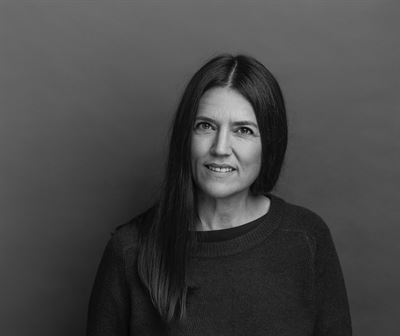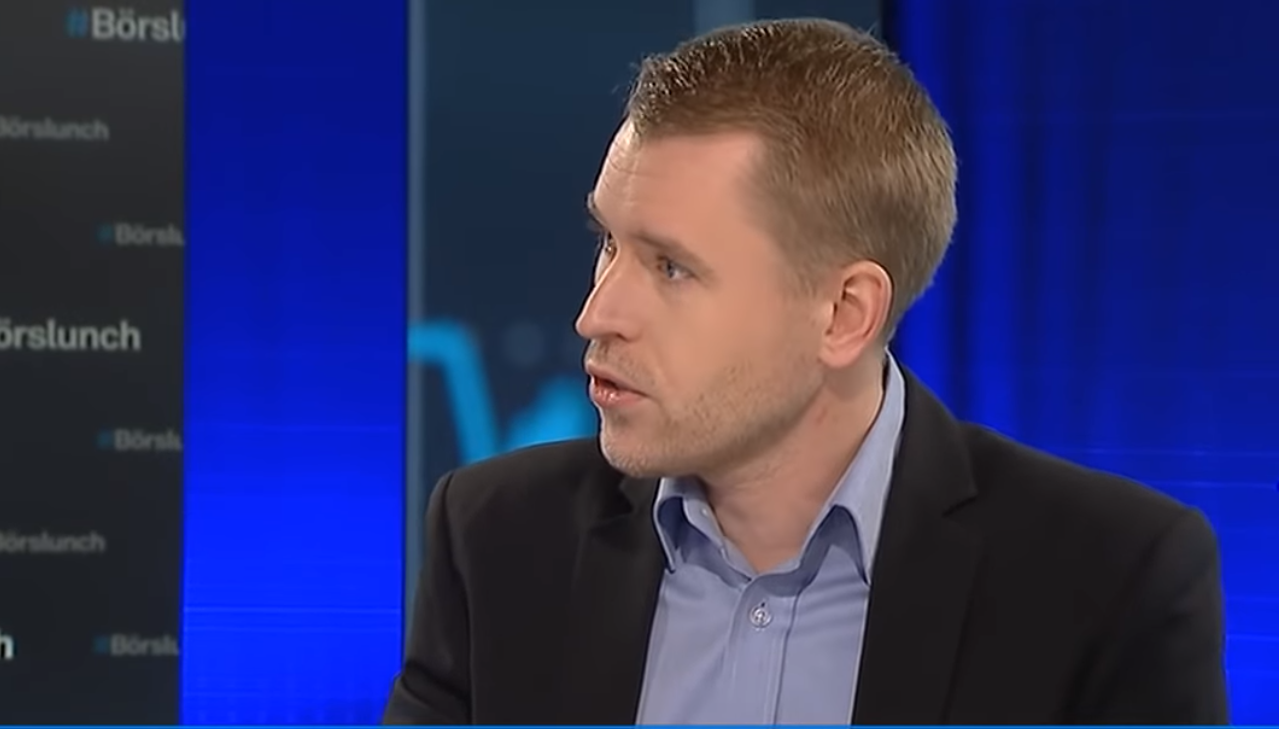Marknadsnyheter
Enhertu demonstrated strong and durable tumour responses in previously treated HER2-mutant advanced lung cancer in DESTINY-Lung02 Phase II trial
AstraZeneca and Daiichi Sankyo’s Enhertu showed objective response rates of 49% and 56% with 5.4mg/kg and 6.4mg/kg doses respectively in primary analysis. Enhertu provided a median progression-free survival of 9.9 months at 5.4mg/kg dose and 15.4 months at 6.4mg/kg dose with a median duration of response of 16.8 months seen at the 5.4 mg/kg dose and not reached at the 6.4 mg/kg dose. Favourable safety profile confirms 5.4mg/kg as optimal dose in this tumour type and reinforces role of Enhertu in this setting.
Results from the primary analysis of the DESTINY-Lung02 Phase II trial showed Enhertu (trastuzumab deruxtecan) continued to demonstrate strong and durable tumour responses in previously treated patients with HER2-mutant (HER2m) unresectable and/or metastatic non-squamous non-small cell lung cancer (NSCLC).
These results, along with the first report on progression-free survival (PFS) and overall survival (OS), were presented today at the International Association for the Study of Lung Cancer (IASLC) 2023 World Conference on Lung Cancer (WCLC) (abstract #MA13.10) and simultaneously published in the Journal of Clinical Oncology.
Enhertu is a specifically engineered HER2-directed antibody drug conjugate (ADC) being jointly developed and commercialised by AstraZeneca and Daiichi Sankyo.
At the primary analysis, a confirmed objective response rate (ORR) of 49.0% and 56.0% was seen in the 5.4mg/kg arm and 6.4mg/kg arm respectively, as assessed by blinded independent central review (BICR). The safety profile for both doses was consistent with the overall safety profile of Enhertu, with the 5.4mg/kg dose demonstrating a favourable safety profile in this patient population.
Secondary endpoint data were also encouraging, with Enhertu demonstrating a median PFS of 9.9 months and 15.4 months in the 5.4mg/kg and 6.4mg/kg arms respectively, as assessed by BICR. A median OS of 19.5 months was achieved in the 5.4mg/kg arm and not reached in the 6.4mg/kg arm at time of analysis.
Pasi A. Jänne, MD, PhD, Director, Lowe Center for Thoracic Oncology and Belfer Center for Applied Cancer Science, Dana-Farber Cancer Institute, US, said: “The primary results from DESTINY-Lung02 demonstrate that Enhertu continues to show strong and durable tumour responses for patients treated at either dose. The favourable safety profile seen at the 5.4mg/kg dose continues to support the use of Enhertu in the treatment of patients with HER2-mutant non-small cell lung cancer, a particularly aggressive form of the disease where patients face a poor prognosis and have historically had few options.”
Susan Galbraith, Executive Vice President, Oncology R&D, AstraZeneca, said: “These results from DESTINY-Lung02 highlight that HER2 is an actionable target in lung cancer and reinforce the importance of testing for predictive biomarkers, including HER2 alterations, at the time of diagnosis to accurately identify patients who may be able to benefit from a targeted treatment. The data also reaffirm our belief in Enhertu as a potential new targeted treatment option for patients who have historically had limited options.”
Ken Takeshita, Global Head, R&D, Daiichi Sankyo, said: “The disease control achieved by more than 90% of patients with previously treated HER2-mutant non-small cell lung cancer in the primary analysis of DESTINY-Lung02 reinforces the efficacy we have already seen with Enhertu in this hard-to-treat disease. These results, along with encouraging progression-free survival and overall survival findings reported for the first time, demonstrate the potential role of Enhertu as an important treatment option for this patient population.”
Summary of results: DESTINY-Lung02 Primary analysis
| Efficacy Measure |
Enhertu (5.4mg/kg) n=102 |
Enhertu (6.4mg/kg) n=50 |
| Confirmed ORR (%) (95% CI)i |
49.0% (39.0-59.1) |
56.0% (41.3-70.0) |
| Complete Response (%) |
1.0% |
4.0% |
| Partial Response (%) |
48.0% |
52.0% |
| Stable Disease (%) |
44.1% |
36.0% |
| Progressive Disease (%) |
3.9% |
4.0% |
| Not Evaluable (%)ii |
2.9% |
4.0% |
| DCR (95% CI) iii |
93.1% (86.4-97.2) |
92.0% (80.8-97.8) |
| Median DoR (months) (95% CI)iv,v | 16.8 (6.4-NE) | NE (8.3-NE) |
| Median TTIR (months) (95% CI)iv |
1.8 (1.2-7.0) |
1.6 (1.2-11.2) |
| Median PFS (months) (95% CI)iv,vi |
9.9 (7.4-NE) |
15.4 (8.3-NE) |
| Median OS (months) (95% CI)vii |
19.5 (13.6-NE) |
NE (12.1-NE) |
CI, confidence interval; DCR, disease control rate; DoR, duration of response; NE, not estimable; ORR, objective response rate; OS, overall survival; PFS, progression free survival; TTIR, time to initial response
Data cutoff: As of 23 December 2022
i Proportion of patients with confirmed CR or PR assessed by BICR per RECIST v1.1
ii Three patients were NE at 5.4mg/kg (one patient never received treatment due to COVID-19; two patients discontinued before first tumour assessment); two patients were NE at 6.4mg/kg (discontinued due to adverse event before first tumour assessment).
iii Proportion of patients with confirmed CR, PR, or SD assessed by BICR
iv Assessed by BICR
v 60.0% and 75.0% of patients in the 5.4 mg/kg and 6.4 mg/kg arms were censored
vi 56.9% and 60.0% of patients in the 5.4 mg/kg and 6.4 mg/kg arms were censored
vii 63.7% and 72.0% of patients in the 5.4 mg/kg and 6.4 mg/kg arms were censored
In DESTINY-Lung02, no new safety signals were observed at either dose of Enhertu. Grade 3 or higher treatment-related treatment emergent adverse events (TEAEs) were lower with Enhertu 5.4mg/kg versus 6.4mg/kg, occurring in 38.6% and 58.0% of all patients, respectively. The most common Grade 3 or higher TEAEs were neutropenia (18.8% (5.4mg/kg); 36.0% (6.4mg/kg)) and anaemia (10.9% (5.4mg/kg); 16.0% (6.4mg/kg)).
There were 27 cases (12.9% in the 5.4mg/kg arm and 28% in the 6.4mg/kg arm) of treatment-related interstitial lung disease (ILD) or pneumonitis reported as determined by an independent adjudication committee. In the 5.4mg/kg arm, the majority of ILD cases were low Grade (Grade 1 or 2) (10.9%) with one Grade 3 event (1.0%), no Grade 4 events and one Grade 5 event (1.0%) observed. In the 6.4mg/kg arm, the majority of ILD cases were also low Grade (26.0%) with no Grade 3 or 4 events and one Grade 5 event (2.0%) reported.
Notes
HER2m NSCLC
Lung cancer is the second most common form of cancer globally, with more than two million patients diagnosed in 2020.1 Prognosis is particularly poor for patients with metastatic NSCLC, as only approximately 9% will live beyond five years after diagnosis.2
HER2 is a tyrosine kinase receptor growth-promoting protein expressed on the surface of many types of tumours, including lung, breast, gastric and colorectal cancers. Certain HER2 (ERBB2) gene alterations (called HER2 mutations) have been identified in patients with non-squamous NSCLC as a distinct molecular target, and occur in approximately 2-4% of patients with this type of lung cancer.3,4 While HER2 gene mutations can occur in a range of patients, they are more commonly found in patients with NSCLC who are younger, female and have never smoked.5 HER2 gene mutations have been independently associated with cancer cell growth and poor prognosis, with an increased incidence of brain metastases.6 Next-generation sequencing has been utilised in the identification of HER2 (ERBB2) mutations.7,8
Although the role of anti-HER2 treatment is well established in breast and gastric cancers, there were no approved HER2-directed therapies in NSCLC prior to the approvals of Enhertu by the Israel Ministry of Health (MOH) Pharmaceutical Division, the Japan Ministry of Health, Labour and Welfare and the accelerated US Food and Drug Administration (FDA) approval of Enhertu in unresectable or metastatic HER2 mutant NSCLC.9
DESTINY-Lung02
DESTINY-Lung02 is a global, randomised Phase II trial evaluating the safety and efficacy of Enhertu in patients with HER2m unresectable and/or metastatic NSCLC with disease recurrence or progression during or after at least one regimen of prior anticancer therapy that must have contained a platinum-based chemotherapy. Patients were randomised 2:1 to receive Enhertu 5.4mg/kg (n=102) or Enhertu 6.4mg/kg (n=50).
The primary endpoint of the trial is confirmed ORR as assessed by BICR. Secondary endpoints include confirmed DCR, DoR and PFS assessed by investigator and BICR, OS and safety.
DESTINY-Lung02 enrolled 152 patients at multiple sites, including Asia, Europe and North America. For more information about the trial, visit ClinicalTrials.gov.
Enhertu
Enhertu is a HER2-directed ADC. Designed using Daiichi Sankyo’s proprietary DXd ADC technology, Enhertu is the lead ADC in the oncology portfolio of Daiichi Sankyo and the most advanced programme in AstraZeneca’s ADC scientific platform. Enhertu consists of a HER2 monoclonal antibody attached to a topoisomerase I inhibitor payload, an exatecan derivative, via a stable tetrapeptide-based cleavable linker.
Enhertu (5.4mg/kg) is approved in more than 50 countries for the treatment of adult patients with unresectable or metastatic HER2-positive breast cancer who have received a (or one or more) prior anti-HER2-based regimen either in the metastatic setting, or in the neoadjuvant or adjuvant setting and have developed disease recurrence during or within six months of completing therapy based on the results from the DESTINY-Breast03 trial.
Enhertu (5.4mg/kg) is approved in more than 40 countries worldwide for the treatment of adult patients with unresectable or metastatic HER2-low (IHC 1+ or IHC 2+/ISH-) breast cancer who have received a prior systemic therapy in the metastatic setting or developed disease recurrence during or within six months of completing adjuvant chemotherapy based on the results from the DESTINY-Breast04 trial.
Enhertu (5.4mg/kg) is approved in Israel, Japan and under accelerated approval in the US for the treatment of adult patients with unresectable or metastatic NSCLC whose tumours have activating HER2 (ERBB2) mutations, as detected by a locally or regionally approved test, and who have received a prior systemic therapy based on the results from the DESTINY-Lung02 trial. Continued approval for this indication in the US may be contingent upon verification and description of clinical benefit in a confirmatory trial.
Enhertu (6.4mg/kg) is approved in more than 30 countries for the treatment of adult patients with locally advanced or metastatic HER2-positive gastric or gastroesophageal junction (GEJ) adenocarcinoma who have received a prior trastuzumab-based regimen based on the results from the DESTINY-Gastric01 and/or DESTINY-Gastric02 trials.
Enhertu development programme
A comprehensive clinical development programme is underway globally, evaluating the efficacy and safety of Enhertu monotherapy across multiple HER2-targetable cancers. Trials in combination with other anticancer treatments, such as immunotherapy, are also underway.
Daiichi Sankyo collaboration
Daiichi Sankyo Company, Limited (TSE: 4568) [referred to as Daiichi Sankyo] and AstraZeneca entered into a global collaboration to jointly develop and commercialise Enhertu (a HER2-directed ADC) in March 2019, and datopotamab deruxtecan (a TROP2-directed ADC) in July 2020, except in Japan where Daiichi Sankyo maintains exclusive rights. Daiichi Sankyo is responsible for the manufacturing and supply of Enhertu and datopotamab deruxtecan.
AstraZeneca in lung cancer
AstraZeneca is working to bring patients with lung cancer closer to cure through the detection and treatment of early-stage disease, while also pushing the boundaries of science to improve outcomes in the resistant and advanced settings. By defining new therapeutic targets and investigating innovative approaches, the Company aims to match medicines to the patients who can benefit most.
The Company’s comprehensive portfolio includes leading lung cancer medicines and the next wave of innovations, including Tagrisso (osimertinib) and Iressa (gefitinib); Imfinzi (durvalumab) and Imjudo (tremelimumab); Enhertu and datopotamab deruxtecan in collaboration with Daiichi Sankyo; Orpathys (savolitinib) in collaboration with HUTCHMED; as well as a pipeline of potential new medicines and combinations across diverse mechanisms of action.
AstraZeneca is a founding member of the Lung Ambition Alliance, a global coalition working to accelerate innovation and deliver meaningful improvements for people with lung cancer, including and beyond treatment.
AstraZeneca in oncology
AstraZeneca is leading a revolution in oncology with the ambition to provide cures for cancer in every form, following the science to understand cancer and all its complexities to discover, develop and deliver life-changing medicines to patients.
The Company’s focus is on some of the most challenging cancers. It is through persistent innovation that AstraZeneca has built one of the most diverse portfolios and pipelines in the industry, with the potential to catalyse changes in the practice of medicine and transform the patient experience.
AstraZeneca has the vision to redefine cancer care and, one day, eliminate cancer as a cause of death.
AstraZeneca
AstraZeneca (LSE/STO/Nasdaq: AZN) is a global, science-led biopharmaceutical company that focuses on the discovery, development, and commercialisation of prescription medicines in Oncology, Rare Diseases, and BioPharmaceuticals, including Cardiovascular, Renal & Metabolism, and Respiratory & Immunology. Based in Cambridge, UK, AstraZeneca operates in over 100 countries and its innovative medicines are used by millions of patients worldwide. Please visit astrazeneca.com and follow the Company on Social Media @AstraZeneca.
Contacts
For details on how to contact the Investor Relations Team, please click here. For Media contacts, click here.
References
- WHO. International Agency of Cancer Research. Cancer Today. 2020. Available at: https://gco.iarc.fr/today/home. Accessed September 2023.
- American Cancer Society. Lung Cancer Survival Rates. Available at: https://www.cancer.org/cancer/lung-cancer/detection-diagnosis-staging/survival-rates.html. Accessed September 2023.
- Liu S, et al. Targeting HER2 Aberrations in Non–Small Cell Lung Cancer with Osimertinib. Clin Cancer Res. 2018; 24(11);2594-2604.
- Riudavets M, et al. Targeting HER2 in non-small-cell lung cancer (NSCLC): a glimpse of hope? An updated review on therapeutic strategies in NSCLC harbouring HER2 alterations. ESMO Open. 2021; 6(5):100260.
- Pillai RN, et al. HER2 mutations in lung adenocarcinomas: A report from the Lung Cancer Mutation Consortium. Cancer. 2017; 123:4099-105.
- Offin M, et al. Frequency and Outcomes of Brain Metastases in Patients With HER2-Mutant Lung Cancers. Cancer. 2019; 125:4380-7.
- Hechtman, J, et al. The Past, Present, and Future of HER2 (ERBB2) in Cancer: Approaches to Molecular Testing and an Evolving Role in Targeted Therapy. Cancer Cyto. 2019; 127(7):428-431.
- Gulilat M, et al. Targeted next generation sequencing as a tool for precision medicine. BMC Medical Genomics. 2019;12(81).
- Zhou J, et al. Clinical outcomes of patients with HER2-mutant advanced lung cancer: chemotherapies versus HER2-directed therapies. Ther Adv Med Oncol. 2020; 12.
Marknadsnyheter
Regeringen föreslår lättnader i byggkraven för studentbostäder
Regeringen har beslutat om en lagrådsremiss med förslag till lättnader i byggkraven för studentbostäder. Syftet är att öka möjligheterna till flexibilitet vid byggandet.
– På många studieorter är det svårt för studenter att hitta boende. Därför behöver byggregelverket förenklas. Syftet är att möjliggöra för fler studentbostäder genom sänkta byggkostnader och ökad flexibilitet, säger infrastruktur- och bostadsminister Andreas Carlson.
Förslaget innebär att det blir möjligt att göra undantag från kraven på tillgänglighet och användbarhet i en byggnad som innehåller studentbostäder. Undantagen ska kunna tillämpas vid både nyproduktion och vid ändring av en byggnad.
Det ska vara möjligt att göra undantag för högst 80 procent av studentbostäderna i ett byggprojekt. Minst 20 procent av studentbostäderna ska fortfarande uppfylla gällande krav på tillgänglighet och användbarhet för personer med nedsatt rörelse- eller orienteringsförmåga.
Lagändringen ger större flexibilitet vid byggande av studentbostäder och skapar fler tänkbara sätt att utforma planlösningar. Till exempel kan bostadsytan minskas och fler bostäder rymmas inom en given yta.
De föreslagna undantagen ska inte hindra personer med funktionsnedsättning att vara delaktiga i sociala sammanhang. En studentbostad som omfattas av undantagen ska kunna besökas av en person med nedsatt rörelse- eller orienteringsförmåga.
Regeringen breddar också definitionen av studentbostäder till att inkludera all vuxenutbildning för att göra det möjligt för fler kommuner att erbjuda studentbostäder.
Förslagen föreslås träda i kraft den 1 juli 2025.
Lagrådsremissen: Lättnader i byggkraven för studentbostäder – Regeringen.se
Presskontakt
Ebba Gustavsson
Pressekreterare hos infrastruktur- och bostadsminister Andreas Carlson
Telefon (växel) 08-405 10 00
Mobil 076-12 70 488
ebba.gustavsson@regeringskansliet.se
Marknadsnyheter
“Vi behöver tillsammans enas om vettiga avtal, som sätter standard för branschen”


Sveriges Radios Kulturnytt gör just nu en mycket välkommen granskning av villkoren i musikbranschen. Igår lyftes artisten Siw Malmkvists situation med ett avtal som inte förnyats på över 60 år. Hennes situation är tyvärr långt ifrån unik. Musikerförbundet har länge uppmärksammat att majorbolagen fortsätter att betala extremt låga royaltynivåer till artister vars kontrakt skrevs på 1960-talet – en tid då digital streaming inte existerade.
– Jag kan intyga att artisterna som talar ut i P1 är långt ifrån ensamma om sin situation och vi uppmanar deras artistkollegor att gå ut med sitt tydliga stöd till de som vågar bryta tystnaden om oskäliga ersättningar, säger Musikerförbundets ordförande Karin Inde.
Musiker och artister skapar det värde som skivbolagen tjänar pengar på, men ändå ser vi gång på gång hur bolagen behåller stora delar av intäkterna. Att en av Sveriges mest folkkära artister, med en karriär som sträcker sig över decennier, fortfarande har en oskälig royalty är ett tydligt bevis på branschens obalans.
– Tystnadskulturen kring prissättning är enbart bra för bolagen. Både artister och musiker skulle verkligen tjäna på att dela med sig till varandra om hur betalningar och dealar verkligen ser ut. Förstås i trygga, egna rum. Det är bara bolagen som tjänar på att vi inte pratar med varandra om pengar, säger Karin Inde.
Stort tack till de modiga artister som ser till att lyfta problematiken! För att vi ska få till en i grunden mer rättvis musikbransch behöver de stora parterna i sammanhanget – skivbolagen, musikerna och artisterna – göra som de flesta andra svenska branscher lyckas med:
– Vi behöver tillsammans enas om vettiga och balanserade avtal, som sätter standard för branschen. Musikerförbundet är redo att göra vår del i arbetet för bättre villkor i musikbranschen, frågan är om skivbolagen är redo, säger Karin Inde.
Karin Inde
Förbundsordförande
karin.inde@musikerforbundet.se
+46 (0)704447228
Musikerförbundet är fackförbundet för professionella musiker och artister. Vi arbetar för förbättrade upphovsrättsliga och arbetsrättsliga villkor och för att våra medlemmar ska få en rättvis del av de värden de skapar i samhället.
Marknadsnyheter
Bönor från egen kaffeskog, sump till jord – Viking Lines nya kaffe gör gott på många olika sätt


Viking Lines resenärer dricker varje år 8,5 miljoner koppar kaffe. Nu satsar rederiet på ett helt nytt kaffe som ger minskade klimatutsläpp och bättre levnadsvillkor för odlarna. Kaffet från Slow Forest odlas på rederiets egen odling i Laos utan kemiska gödningsmedel, handplockas och rostas därefter i Danmark.
Allt kaffe som serveras på Viking Lines fartyg är nu hållbart producerat Slow Forest-kaffe, odlat på rederiets 75 hektar stora odling på högplatåerna i Laos och rostat i Danmark. Kaffeplantorna odlas bland träd på återbeskogad mark, i stället för på traditionellt skövlade plantager. Viking Lines odling ligger i en kolsänka där målsättningen är att plantera 30 000 träd, vilket innebär nästan 400 träd per hektar. Kaffeskogen förbättrar också den lokala biologiska mångfalden i området.
Odlingen, bearbetningen och rostningen av kaffet hanteras av Slow Forest Coffee. För företaget är det viktigt att produktionskedjan är rättvis och transparent. Utöver miljöfördelarna erbjuder Slow Forest bättre lönevillkor och sjukersättning för byns odlare.
”Den traditionella kaffetillverkningens koldioxidavtryck är stort och merparten av intäkterna går till Europa i stället för produktionsländerna. Vi ville göra annorlunda. Våra kunder vill göra hållbara val, och nu kan de njuta av sitt kaffe med bättre samvete än någonsin tidigare,” berättar Viking Lines restaurangchef Janne Lindholm.
Bönorna till Slow Forest-kaffet får sakta mogna i skuggan av träden, utan kemiska gödningsmedel. De plockas också för hand, vilket avsevärt förbättrar kaffets kvalitet och smak. Viking Lines nya kaffe består till 100 procent av Arabica-bönor, med en balanserad syrlighet samt smak av nötter och choklad. Rostningsprofilen har skapats av den världsberömda danska rostningsmästaren Michael de Renouard.
”Vi valde en mörkrost till fartygets kaffe, vilket passar både finländarnas och svenskarnas nuvarande smakpreferenser gällande rostning. Finländarnas smak gällande kaffe har under de senaste åren utvecklats mot en mörkare rostning. Innan vi gjorde vårt slutgiltiga val testades det nya kaffet i Viking Cinderellas bufférestaurang och personalmässen – och båda testgrupperna gav toppbetyg. Då 8,5 miljoner koppar kaffe bryggs varje år kan inget lämnas åt slumpen!” säger Janne Lindholm.
Viking Lines hållbarhetsmål stannar inte vid produktionskedjan. Kaffesump från fartygen återvinns nämligen som råmaterial för trädgårdsjord. Detta minskar avsevärt användningen av jungfrulig torv vid tillverkningen av mylla.
”Vi har som mål att allt som tagits ombord på fartygen som är möjligt att återvinna ska återanvändas eller återvinnas. Det gäller inte bara kaffet utan även matavfall och till exempel textilier som tas ur bruk. Ett bra exempel på vårt livscykeltänkande är att frityrolja från fartygets restauranger blir till biobränsle för den finska sjöfartsindustrin,” säger Viking Lines hållbarhetschef Dani Lindberg.
Slow Forest Coffee – 5 fakta:
- Slow Forest Coffee är ett kaffeföretag som verkar i Laos, Vietnam och Indonesien i samarbete med över 500 lokala kaffeodlare.
- Företaget grundades år 2019 av Pinja Puustjärvi, driven av en vilja att skydda skogarna i Laos och stötta lokala odlare. Puustjärvi bodde som barn i Laos på grund av sin fars arbete.
- Kaffet odlas i restaurerade kaffeskogar, som binder stora mängder kol och ökar den biologiska mångfalden.
- Det är viktigt för företaget att produktionskedjan är ansvarsfull och transparent, samt att verksamheten gynnar både miljön och de lokala samhällena.
- Slow Forest Coffee betalar odlarna bättre ersättning än genomsnittet i Laos och erbjuder förmåner som underlättar deras liv: förskottsbetalningar, utbildning och möjligheten att låna pengar från en krisfond.
Mera infomation om Slow Forest Coffee här
Tilläggsinformation:
Janne Lindholm, restaurangchef
janne.lindholm@vikingline.com, tel. +358 400 744 806
Dani Lindberg, hållbarhetschef
dani.lindberg@vikingline.com, tel. +358 18 27 000
Johanna Boijer-Svahnström, informationsdirektör
johanna.boijer@vikingline.com, tel. +358 18 270 00
Christa Grönlund, informationschef
christa.gronlund@vikingline.com, tel. +358 9 123 51
-
Analys från DailyFX10 år ago
EUR/USD Flirts with Monthly Close Under 30 Year Trendline
-
Marknadsnyheter5 år ago
BrainCool AB (publ): erhåller bidrag (grant) om 0,9 MSEK från Vinnova för bolagets projekt inom behandling av covid-19 patienter med hög feber
-

 Marknadsnyheter2 år ago
Marknadsnyheter2 år agoUpptäck de bästa verktygen för att analysera Bitcoin!
-
Analys från DailyFX12 år ago
Japanese Yen Breakout or Fakeout? ZAR/JPY May Provide the Answer
-

 Marknadsnyheter2 år ago
Marknadsnyheter2 år agoDärför föredrar svenska spelare att spela via mobiltelefonen
-
Analys från DailyFX12 år ago
Price & Time: Key Levels to Watch in the Aftermath of NFP
-
Analys från DailyFX8 år ago
Gold Prices Falter at Resistance: Is the Bullish Run Finished?
-

 Nyheter7 år ago
Nyheter7 år agoTeknisk analys med Martin Hallström och Nils Brobacke

